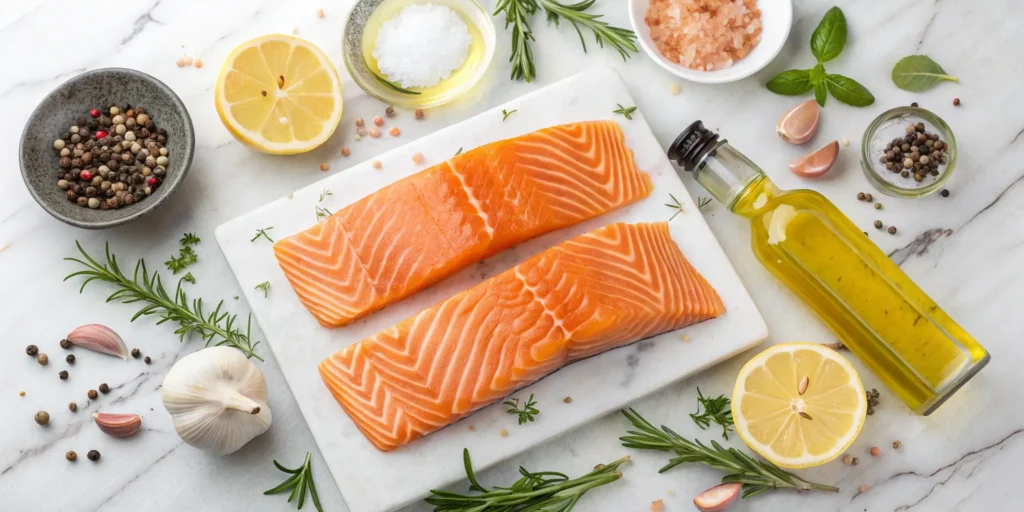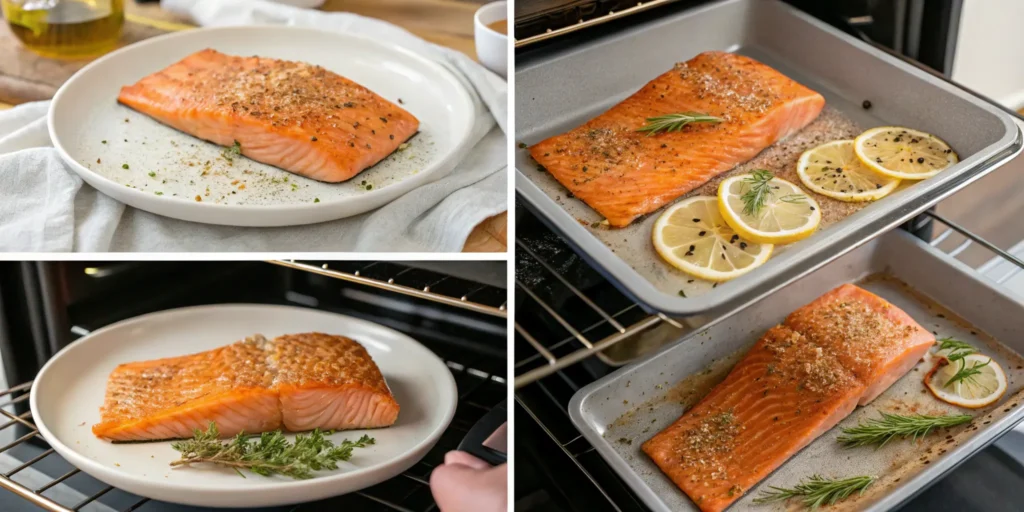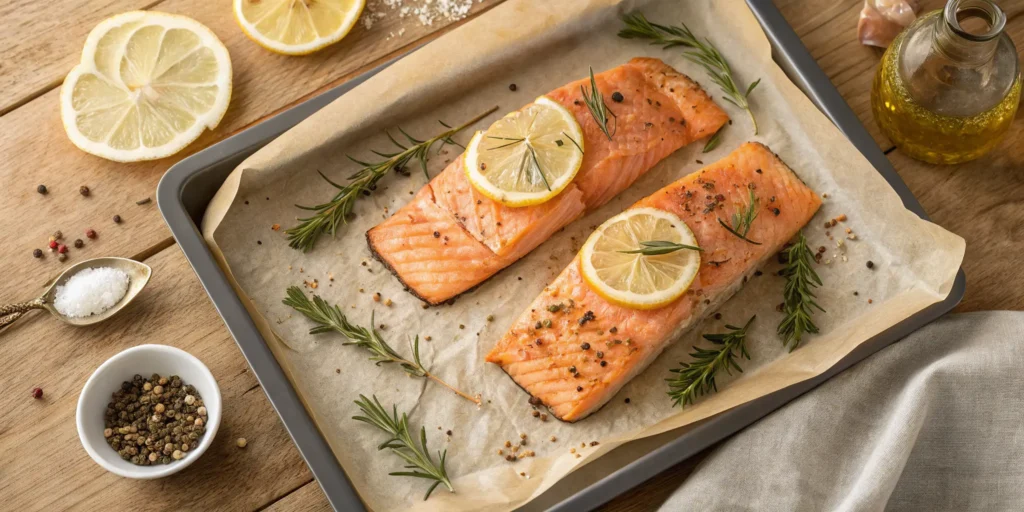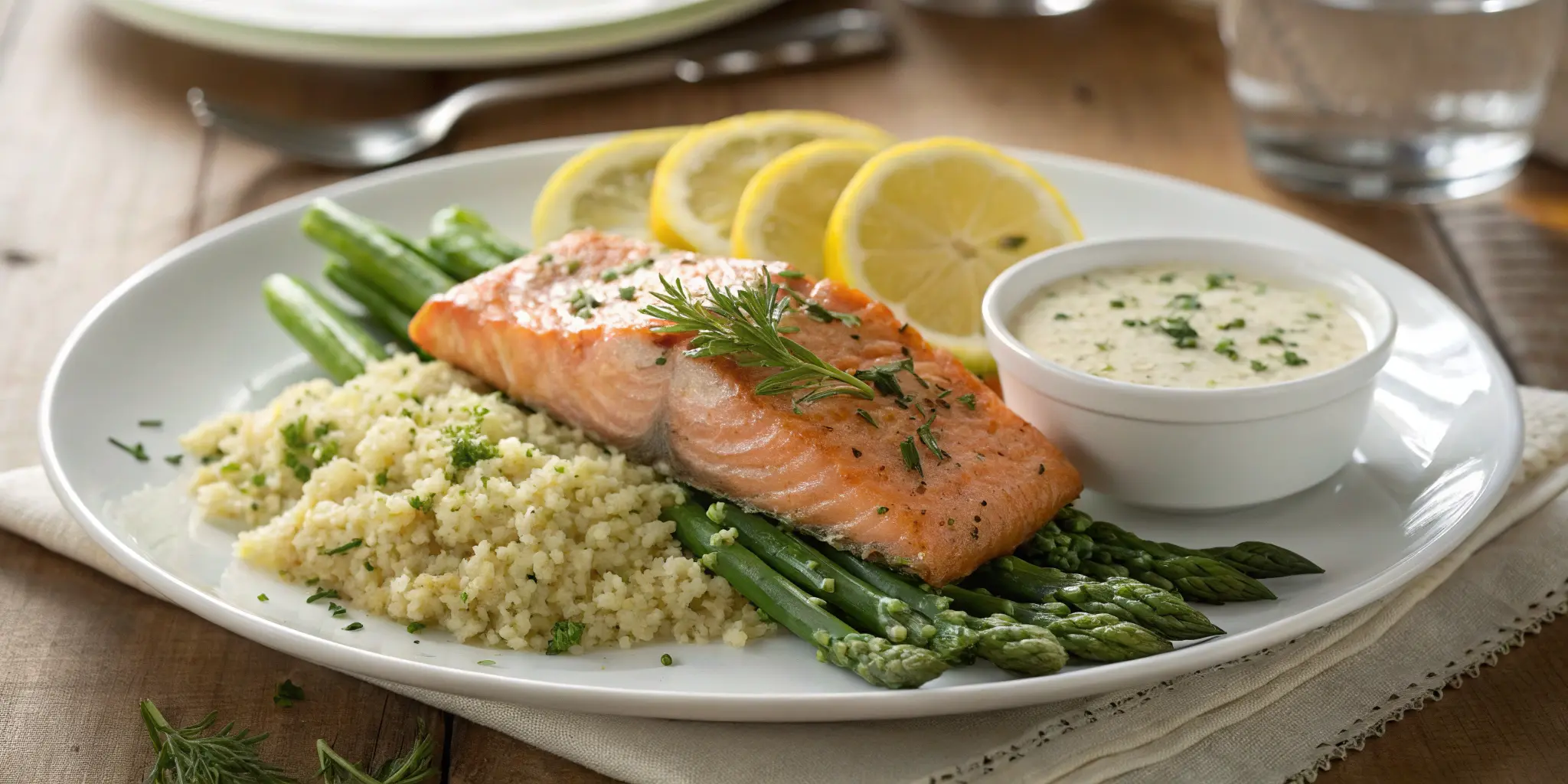Roasted Salmon: 7 Expert Tips for a Delicious & Healthy Meal
Table of Contents
A Heartwarming Invitation to Your Table
Imagine coming home after a long day, craving something that feels both comforting and nourishing. Roasted salmon fits that need perfectly. It gives you a rich, satisfying flavor while supporting your wellness goals. Whether you’re cooking for yourself or hosting a dinner for friends, this dish delivers a sense of warmth and accomplishment. The aroma alone can lift your spirits, and the taste? Even better. This guide walks you through how to choose, prepare, and serve the best roasted salmon, ensuring every bite is both delicious and healthy.
Why Roasted Salmon Is the Perfect Healthy Meal
You’re not just making a meal—you’re investing in your health. Here’s why roasted salmon deserves a spot in your weekly menu:
- Rich in Omega-3 Fatty Acids: These essential fats help reduce inflammation and support brain health.
- High in Lean Protein: Keeps you full longer, promotes muscle repair, and boosts metabolism.
- Packed with Nutrients: Including B vitamins, selenium, and potassium.
- Heart-Friendly: Studies from the American Heart Association highlight salmon’s role in reducing heart disease risk.
- Low-Calorie Option: A great choice if you’re watching your weight without sacrificing flavor.
It fits easily into various dietary lifestyles—keto, gluten-free, paleo—and provides essential nutrients in every serving.
Choosing the Best Salmon for Roasting
Getting the right kind of salmon can make or break your dish. Here’s how to make the best choice:
Wild-Caught vs. Farm-Raised
- Wild-Caught: Tends to have a firmer texture and deeper flavor due to a natural diet and active lifestyle.
- Farm-Raised: Often more accessible and affordable but may contain more fat due to a controlled feeding environment.
- Best Choice: Look for wild-caught options when possible. Sockeye, Coho, and King salmon are excellent picks for roasting.
Fresh vs. Frozen
- Fresh Salmon: Offers the best flavor but should be cooked within 1-2 days of purchase.
- Frozen Salmon: Can be just as good if flash-frozen at sea. Make sure the packaging is intact and free from ice crystals.
How to Spot Quality Salmon
- Color: Bright, even coloration without dullness.
- Texture: Firm and resilient when pressed.
- Smell: Mild, ocean-like scent—never fishy.
Don’t hesitate to ask your local fishmonger for recommendations. A little guidance goes a long way.
Essential Ingredients for a Delicious Roasted Salmon Recipe

Below is a handy table that breaks down everything you’ll need for a classic roasted salmon dish:
| Ingredient | Quantity | Notes |
|---|---|---|
| Salmon fillets | 4 (6 oz each) | Skin-on for better texture |
| Olive oil | 2 tbsp | Choose extra virgin if available |
| Fresh lemon juice | 2 tbsp | Adds brightness and tang |
| Garlic (minced) | 3 cloves | Enhances depth and aroma |
| Fresh dill or parsley | 2 tbsp (chopped) | Optional garnish for freshness |
| Salt | 1 tsp | Or adjust to taste |
| Black pepper | ½ tsp | Freshly ground for best results |
| Paprika or chili flakes | ½ tsp | Optional kick of spice |
Feel free to customize your ingredients based on what you have in your pantry. Substitutions are welcome—as long as the balance of flavor is maintained.
How to Roast Salmon Perfectly Every Time
You don’t need to be a trained chef to make restaurant-worthy roasted salmon. Follow these steps and your dinner will be a guaranteed hit:

Step-by-Step Instructions
- Preheat your oven to 400°F (204°C).
- Prepare your baking sheet with parchment paper or foil for easy cleanup.
- Pat the salmon dry with a paper towel—this ensures crisp edges.
- Lay salmon skin-side down, spaced evenly on the tray.
- Drizzle with olive oil and lemon juice, ensuring even coverage.
- Sprinkle garlic, salt, pepper, and herbs across each piece.
- Roast for 12–15 minutes or until the internal temperature hits 125°F–130°F.
- Let rest for 3–5 minutes before serving.
Pro Tips for Success
- Avoid Overcooking: Salmon keeps cooking after you pull it from the oven. Stop at 125°F for medium.
- Use a Meat Thermometer: Accuracy is key to moist and flaky salmon.
- Broil for the Final Touch: Turn on the broiler for 2 minutes at the end to crisp the top.
Flavor Variations and Marinade Ideas
Spice things up by exploring different marinades. These simple tweaks can elevate your roasted salmon to new levels.
Popular Marinade Options
- Honey Garlic Marinade: Soy sauce, honey, garlic, and a splash of ginger.
- Lemon Herb Butter: Melted butter mixed with lemon zest, dill, and parsley.
- Cajun Rub: Paprika, cayenne, garlic powder, and onion powder for a Southern kick.
Complementary Flavors
Pair your salmon with the right sides to round out your meal:
- Vegetables: Roasted brussels sprouts, asparagus, or carrots.
- Grains: Wild rice, quinoa, or couscous.
- Sauces: Tzatziki, chimichurri, or lemon garlic aioli.
Side Dishes That Complement Roasted Salmon

Don’t let your salmon go solo. Pair it with a dish that complements both texture and taste:
- Roasted Garlic Mashed Potatoes: Creamy and comforting.
- Steamed Broccoli or Green Beans: Add a touch of color and crunch.
- Lemon Couscous Salad: Light, zesty, and refreshing.
- Grilled Asparagus with Balsamic Glaze: A crowd favorite.
Meal Prep and Storage Tips
Salmon is meal-prep friendly. Cook once, eat multiple times. Here’s how to keep it fresh:
Refrigeration
- Store in a sealed container for up to 3 days.
- Reheat gently in a 275°F oven to maintain texture and moisture.
Freezing Instructions
- Wrap fillets in foil, then place in freezer bags.
- Store for up to 2 months.
- Thaw overnight in the fridge before reheating.
Common Mistakes to Avoid When Roasting Salmon
Sometimes small oversights can derail your dish. Avoid these common pitfalls:
- Overcooking: Leads to dryness. Always check temperature.
- Lack of Seasoning: Don’t skimp on salt and acid.
- Poor Quality Fish: Even the best recipe can’t save subpar salmon.
- Skipping Resting Time: Rest allows juices to redistribute.
- Cold Start: Let salmon come to room temp before roasting.
Frequently Asked Questions About Roasted Salmon
How long does it take to roast salmon at 400 degrees?
It typically takes 12 to 15 minutes, depending on thickness. For one-inch thick fillets, start checking around the 12-minute mark.
Is it better to roast salmon covered or uncovered?
Roast it uncovered to allow the top to caramelize. Covering it steams the fish instead.
What herbs go best with roasted salmon?
Fresh dill, parsley, thyme, basil, and tarragon enhance its natural flavor without overpowering.
Can I roast frozen salmon?
Yes, but add 5–7 minutes to your cook time. Start roasting plain, then season halfway through.
What wine pairs well with roasted salmon?
Chardonnay, Pinot Noir, and Sauvignon Blanc all work beautifully, depending on your marinade.
Your Go-To Guide for the Perfect Roasted Salmon Meal
There you have it. You’re now equipped with everything needed to make roasted salmon the star of your table. From picking the freshest fillet to mastering roasting techniques, you’ve got the tools to create a healthy, flavor-packed meal that will impress every time.
So go ahead—get your salmon, preheat that oven, and bring a little joy to your kitchen tonight.
Ready to try it yourself? Share your creation online or save this guide for your next culinary adventure!

